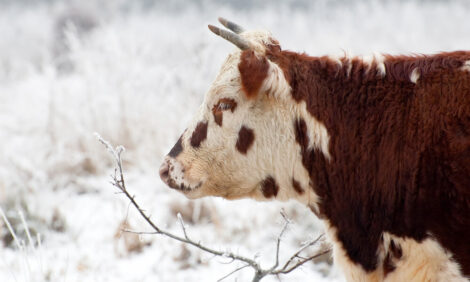



Celebrating 50 Years with the industry’s only in-feed estrus suppressor
Podcast with managing nutritionist Gary Sides, PhD, looks back on five decades with MGA®The year was 1968 when MGA® — the cattle industry’s only in-feed estrus (heat) suppressor — came to market. Back then, one gallon of gasoline was $0.34. For $20, producers could buy one ton of hay, and with $1, a bushel of corn. There have been many changes in the last 50 years. But MGA remains the only feed additive that suppresses heat in feedlot heifers, improves feed efficiency, increases weight gain, improves quality grade and synchronises breeding programs in heifers on the ranch. [1]
“How many 50-year-old animal health products are worth more today than when they were first launched?” asked Dr. Gary Sides, managing nutritionist, Beef Strategic Technical Services with Zoetis. “And even more, how many 50-year-old products are still around today and in use across the industry?”
When asked by producers, “What is the real value of estrus suppression and MGA?” Dr. Sides is quick to respond that suppressing estrus in heifers is just the beginning.
“If heifers are in heat at the time of slaughter, they have about a 40% increased chance of becoming a dark cutter. This presents huge discounts on carcass value for cattlemen,” Dr. Sides said. “Not only that, heifers in heat are less interested in consuming feed and may result in bullers, which can injure their herdmates. Profit losses quickly add up from decreased feed intake, lower gain, poor quality grades, reduced feed efficiency and increased injury.”
The importance of estrus suppression extends beyond the feedlot to serve as a valuable part of synchronised breeding programs for heifers on cow/calf operations. Suppressing estrus allows producers to have a more defined breeding season and use some of the industry’s top sires through artificial insemination. Producers also see a more grouped calving season, which helps increase weaning weights, as the first calves born are the heaviest come weaning time.
Recently, Dr. Sides analysed two contemporary performance studies with MGA — one conducted in Texas, with the second in Canada. The overall study data suggests that MGA increases total gain and hot carcass weight and reduces dark cutters. Results also suggest improved feed efficiency and percentage of heifers grading choice and prime. Hear more from Dr. Sides about the compelling research — detailing a 25-pound advantage — and tips to improve profit for both feedlot and cow/calf operations. [1,2]
Download this podcast for insights you won’t want to miss. >>
To learn more, visit with your local nutritionist, veterinarian or Zoetis representative. And for additional resources, look to CattleFeedAddtives.com.
References:
1 Sides GE, Swingle RS, Vasconcelos JT, Borg RC, Moseley WM. Effect of Feeding Melengestrol Acetate, Monensin, and Tylosin on Performance, Carcass Measurements, and Liver Abscesses of Feedlot Heifers. Prof Anim Sci. 2009;2(5):459-464.
2 Perrett T, Wildman BK, Vogstad AR, et al. Evaluation of the Efficacy and Cost-Effectiveness of Melengestrol Acetate in Feedlot Heifer Calves in Western Canada. Vet Ther. 2008;9(3):223-240.
About Zoetis
Zoetis (NYSE: ZTS) is the leading animal health company, dedicated to supporting its customers and their businesses. Building on more than 60 years of experience in animal health, Zoetis discovers, develops, manufactures and markets veterinary vaccines and medicines, complemented by diagnostic products, genetic tests, biodevices and a range of services. Zoetis serves veterinarians, livestock producers and people who raise and care for farm and companion animals with sales of its products in more than 100 countries. In 2017, the company generated annual revenue of $5.3 billion with approximately 9,000 employees. For more information, visit www.zoetisUS.com.
| TheCattleSite News Desk | Read more Zoetis News here |



